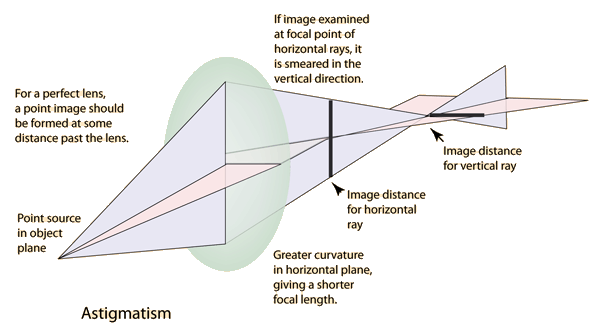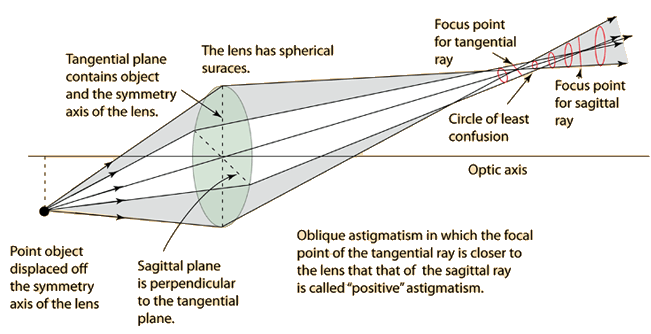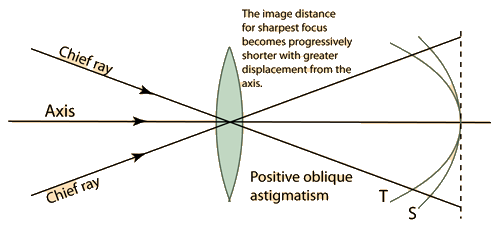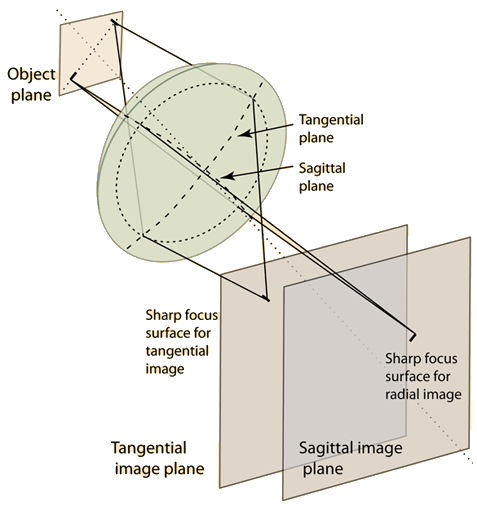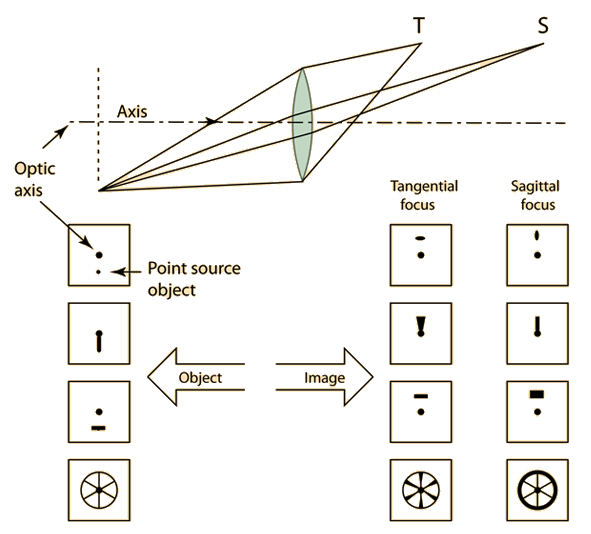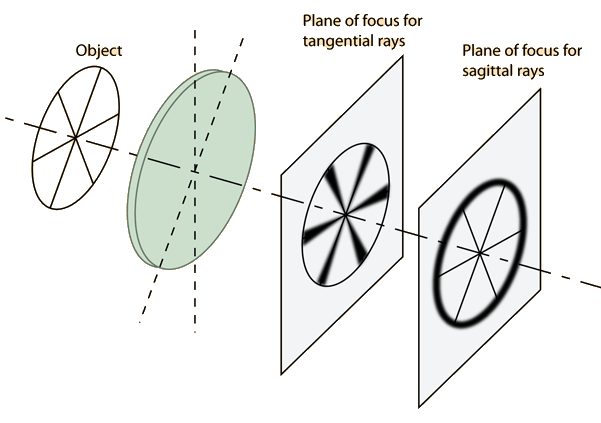Coma
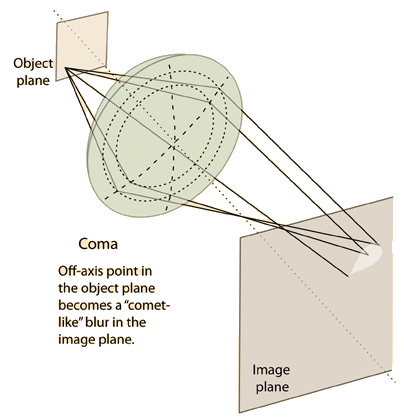 |
Coma is an aberration which causes rays from an off-axis point of light in the object plane to create a trailing "comet-like" blur directed away from the optic axis (for positive coma). A lens with considerable coma may produce a sharp image in the center of the field, but become increasingly blurred toward the edges. For a single lens, coma can be partially corrected by bending the lens. More complete correction can be achieved by using a combination of lenses symmetric about a central stop. |
Hecht, 2nd Ed in Sec 6.3 on aberrations gives a careful discussion of coma. For positive coma, rays from an off-axis object through larger radii of the lens contribute a larger oval of light further from the principal focus. | 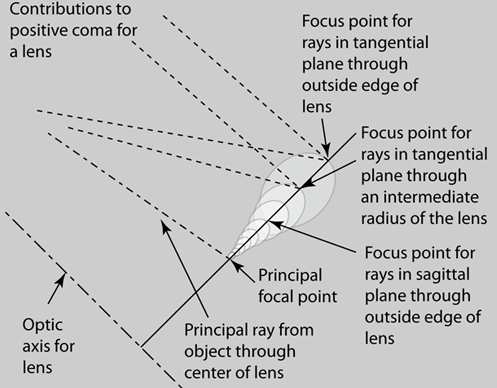 |
Hecht notes that a little more than half of the light in the image is in the roughly triangular region inside the large oval above, so the image fades as it expands away from the central focus. That encourages the picturing of this image as comet-like.
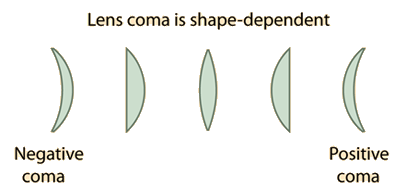 |
Coma is shape-dependent, so a lens shape can be found with zero coma for a given object distance. That lens would not be optimum for other object distances. |
For more versatile correction of coma, one can use a combination of two lenses, both of which are corrected for zero coma at infinite object distance. The appropriate separation of these two lenses can correct for coma at various object distances. Coma can also be corrected by an appropriately placed stop, but the placement and size of an optimum stop also depends upon the other aberrations.
| Lens Aberrations |
Lens concepts
Reference
Optics References
Hecht, 2nd Ed.
Sec 6.3
| HyperPhysics***** Light and Vision | R Nave |
